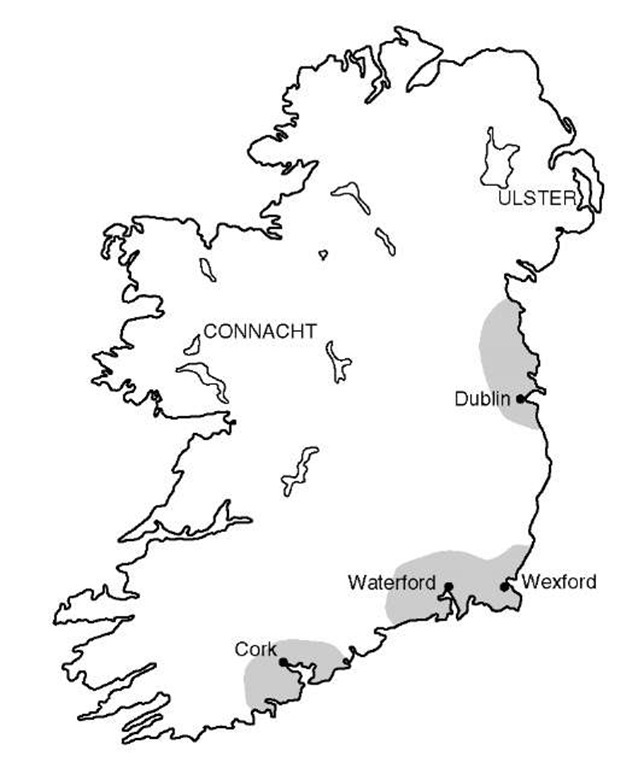Ireland, like most of Western Europe, suffered from the bubonic plague, or the "Black Death," in the years from 1348 to 1350. Unlike its nearest neighbor, England, the surviving contemporary sources for this catastrophic event are very limited. Even archaeological evidence is meager. Therefore, in order to understand the impact of this event on Ireland, we are forced to rely on parallel studies in other European countries that are better chronicled in the Middle Ages. However, even this assumption may not be wholly tenable in the light of recent research into the complexities of the pattern of medieval Irish settlement. Given the ease at which this disease spread among the population in Europe generally, Ireland’s almost unique rural settlement pattern may have affected the plague’s incidence to a greater extent than can be accurately gauged.
All that is known for certain is that the Black Death probably arrived in Ireland at the ports of Howth and Drogheda, both located north of Dublin, in August 1348, and spread to the capital, Dublin, soon afterwards. The Franciscan friar John Clyn in his contemporary annals was able to accurately chart the progress of the disease within the houses of his Order, first in Dublin and then in Kilkenny. He also stated that the total number of citizens of Dublin who succumbed was 14,000, a very high number (and doubltless an exaggeration) out of a possible total urban population of not much more than 20,000 at that time.
The Black Death in 1348.
The several surviving Gaelic-Irish chronicles all record that the plague had reached the west of Ireland by 1349, and seem therefore to be derived from the same original source, and this has led some scholars to suggest that the more dispersed Gaelic-Irish population in the west and northwest may have largely escaped from the pestilence. This, however, is predicated upon two more assumptions: firstly that the disease was, in fact, bubonic plague and secondly that all the Anglo-Irish population were living in nucleated settlements. There are some epistemological indicators of this plague that have suggested to researchers such as Twigg that the Black Death may have been an outbreak of anthrax, although most academic opinion does not support his theory. Secondly, in this period a significant proportion of the rural Anglo-Irish population within the colony was also living in dispersed settlements, such as the moated houses of isolated manors, and may therefore have escaped the worst effects of the plague.
Nevertheless, all the indications are that the urban population, which was crowded together in largely unsanitary conditions, suffered most from this disease, as happened elsewhere in Europe. The total population loss caused by this worst outbreak of plague in the Middle Ages would probably have been somewhere in the region of 25 percent to 33 precent, if contemporary European mortality models are taken into account. That it ceased to spread after about two years is probably as a result of the eventual death of all the carriers, infected rats, as well as the building-up of some kind of natural immunity over this period by the healthiest members of the Irish population. One should also note that although the Black Death as such ended at that point, the recurrence of plague was a regular phenomenon in succeeding generations.

